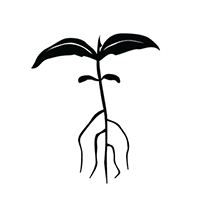Description
Botanical name : Brassica oleracea
Synonyms :
Common name : Cabbage, broccoli, cauliflower, kale, Brussels sprouts, collard greens, Savoy cabbage, kohlrabi, gai lan, kohl rabi
- Challenge
- Lifecycle: Biennial
- Pollination: cross-pollinated by insects
- Mating system: short description, including flower type (perfect, monoecious, dioecious etc)
- Suggested spacing: About 60 cm. Flowering plants may require stalking or other support.
- Seed specific requirements: Some varieties are self-infertile and must have at least 5 of that variety flowering at the same time for seed to be produced.
- Isolation distance: 250 to 500 metres
- Population size: 20 to 50 plants
- Seed maturity:
- Processing method: Dry
- Expected seed viability: 4 years
Images

- Small image that represents the plant, flowers or fruits and seeds.
- Seed
- Seedling
- Plant at eating stage (if leafy green etc. not fruit)
- Plant at flowering
- Plant fruit
- Harvest time
Growing for seed
There are a lot of edible plants that fall into the Brassica oleracea species. They will all cross with each other so you should only grow one within your chosen isolation distance unless you carry out other isolation techniques.
There are a small number of varieties that we call ‘kale’ that are actually Brassica napus. These are the Siberian or Russian kales. They will not cross with Brassica oleracea species and one of each species can be grown side-by-side for seed saving.
To grow through for seed the plants should be placed at least 60cm apart to give them space. They grow quite large and tall. They can be top-heavy as the seed develops and, in windy sites particularly, they may need staking.
Brassicas are biennial plants and this means they should only set seed after a cold period. They should not go to seed until the following spring. This means they can be in the ground for a long time before they produce seed.
In southern Australia we usually plant Brassica oleracea varieties for seed crops early in the new year and are harvesting seed by about the following Christmas/New Year period after they go through a winter cold period.
Selection
Any plants that start to flower before going through a winter chill should be removed. Plants that are particularly pest or disease prone should also be removed from the gene pool.
As always, we are looking for robust, healthy plants which have the desired characteristics. Remove any that do not meet your criteria for that variety.
Diseases & Pests (Optional section)
Cabbage Moth and the Cabbage White Butterfly can do a lot of damage to these crops.
Harvest
Flowers develop into seed pods starting at the bottom of the flower stalk and moving upwards. The lower pods will mature first.
Stalks or whole plants should be cut when the lowest pods start to split open in the garden. This gives the best balance between not losing mature seed through dropping in the garden and maturing the most seed possible on the stem.
The seed from the lowest pods will always be slightly larger and so produce more vigorous plants that the seed from pods at the top of the stem.
Allow the cut stalks/plants to fully dry out before processing. Either hang in bags or spread on a tarp under cover for the drying to complete.
Processing
Brassica seed is a small round seed and is typically easy to separate from its pods. Pods will split open while drying or a small amount of physical disturbance (hitting or treading on the bagged material) will cause the pods to split and eject the seed.
Simple sieving following by winnowing is used to separate the seed from any unwanted plant material.
After processing it is a good idea to keep the seed in a paper bag in a dry location for another few weeks to ensure that any moisture being held in the seed has a chance to dry off.
There is a fair likelihood that insect pests will have laid their eggs in or on the seed. To stop them in their tracks one of the easiest methods of control is to freeze the seed for a few days. To do this the seed must be absolutely dry first. It then must be placed in an airtight container – like a glass jar. 48 to 72 hours in the freezer is all that is required to kill pests and their eggs.
Seed is best stored in an airtight container where it is dark, cool and dry.
Cultivation
- How is it grown?
- Sowing dates. Suitable climates. Germination temps etc?
History
- Any relevant historical info regarding origins, cultivation and other salient details.
Uses
- How is it used?
- How to eat or cook it?
Contributors: Liz Worth, Julie Davies
Other Resources
- Links to other sites and videos that are useful
